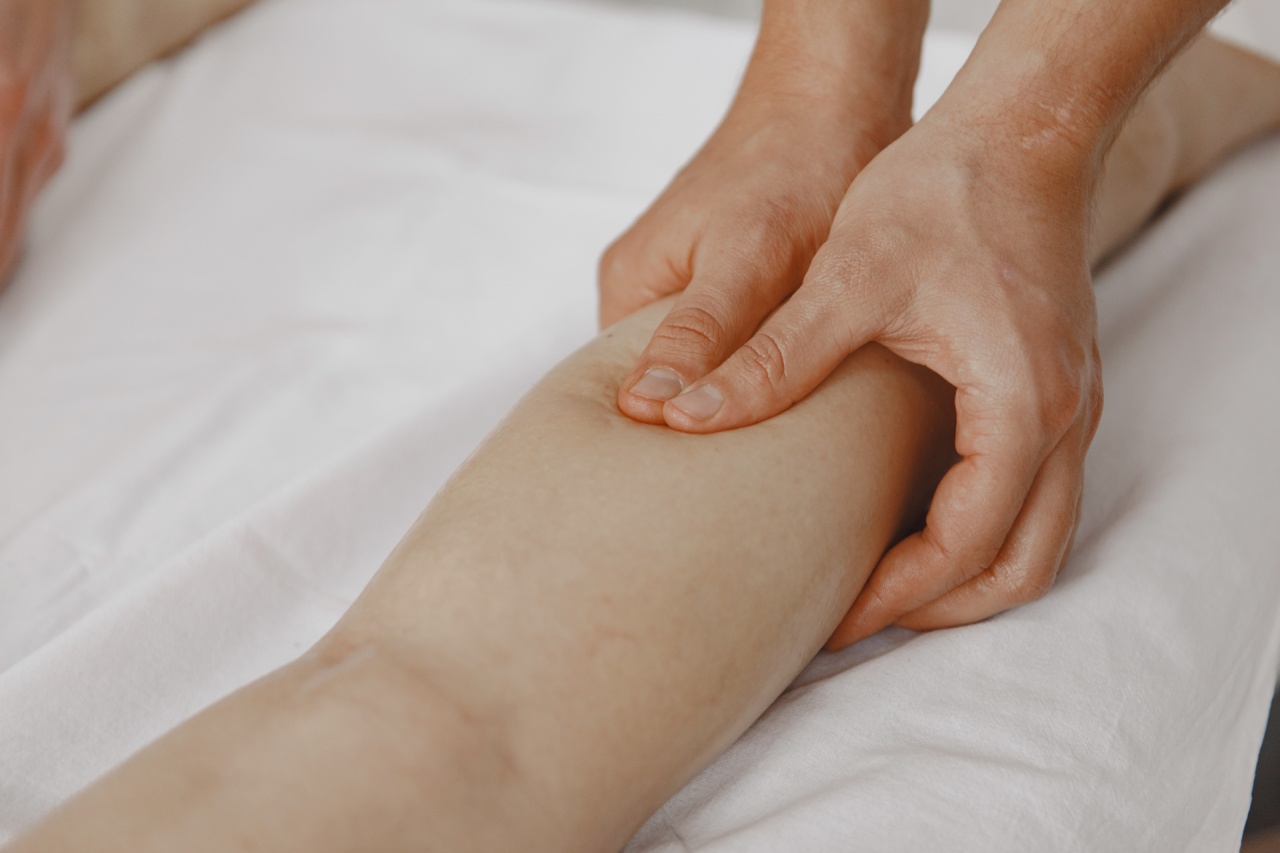When it comes to skin diseases, the legs are very susceptible to various conditions due to their exposure to different irritants, allergens, and environmental factors. Leg skin diseases can cause discomfort, pain, itching, and even embarrassment.
In this article, we will explore various leg skin diseases, their symptoms, causes, and treatment options.
1. Eczema
Eczema, also known as atopic dermatitis, is a chronic inflammatory skin condition that can affect the legs. It is characterized by dry, itchy, and red patches of skin.
Common symptoms of eczema on the legs include intense itching, redness, swelling, and the formation of small, fluid-filled blisters. The exact cause of eczema is unknown, but it is believed to be a combination of genetic and environmental factors. Treatment options for eczema include topical corticosteroids, moisturizers, antihistamines, and avoiding triggers.
2. Psoriasis
Psoriasis is a chronic autoimmune skin condition that can affect any part of the body, including the legs. It causes the skin cells to multiply at an accelerated rate, leading to the formation of thick, red, and scaly patches.
Symptoms of psoriasis on the legs include dryness, itching, soreness, and the appearance of silvery scales. The exact cause of psoriasis is unknown, but it is believed to be related to an overactive immune system. Treatment options for psoriasis include topical creams, phototherapy, oral medications, and biologic drugs.
3. Cellulitis
Cellulitis is a bacterial skin infection that can occur on the legs, usually as a result of a break in the skin. It causes the affected area to become warm, red, swollen, and tender. Other symptoms may include fever, chills, and the formation of blisters.
Common causes of cellulitis on the legs include cuts, insect bites, and underlying skin conditions such as eczema and psoriasis. Treatment for cellulitis typically involves oral antibiotics and rest. In severe cases, hospitalization may be required.
4. Varicose Veins
Varicose veins are enlarged, twisted veins that commonly occur in the legs. They can be accompanied by symptoms such as leg pain, swelling, heaviness, and itching.
Varicose veins develop when the valves in the veins that help blood flow towards the heart become weak or damaged, causing blood to pool and veins to bulge. Risk factors for varicose veins include genetics, pregnancy, obesity, and prolonged standing or sitting. Treatment options for varicose veins range from lifestyle modifications and compression stockings to minimally invasive procedures and surgery.
5. Hives
Hives, also known as urticaria, are raised, itchy welts that can appear on any part of the body, including the legs. They can vary in size and shape, and often cluster together to form larger patches.
Hives can be triggered by allergic reactions to certain foods, medications, insect bites, or environmental factors. Stress and autoimmune disorders may also contribute to the development of hives. Treatment for hives may include antihistamines, corticosteroids, and identifying and avoiding the triggers.
6. Dermatitis
Dermatitis refers to inflammation of the skin that can occur on the legs due to various causes, such as irritants, allergens, and exposure to certain substances.
Contact dermatitis, which occurs when the skin comes into direct contact with irritants or allergens, can cause redness, itching, and swelling on the legs. Atopic dermatitis, a type of eczema, can also affect the legs, causing dryness, scaling, and thickening of the skin. Treatment for dermatitis typically involves avoiding triggers, topical corticosteroids, and moisturizers.
7. Tinea Infections
Tinea infections, also known as ringworm, are fungal infections that can affect various parts of the body, including the legs. The most common types of tinea infections on the legs are athlete’s foot (tinea pedis) and jock itch (tinea cruris).
Symptoms of tinea infections on the legs include redness, itching, flaking, and the formation of circular patches with raised edges. These infections are highly contagious and can be spread through direct contact or contaminated surfaces. Treatment options for tinea infections include antifungal creams, powders, and oral medications.
8. Folliculitis
Folliculitis is an infection or inflammation of the hair follicles that can occur on the legs. It is often caused by bacteria, fungi, or viruses entering the hair follicles.
Folliculitis can cause red, tender bumps or pustules on the affected area, which may be itchy or painful. Shaving, friction from clothing, and compromised immune system can increase the risk of developing folliculitis on the legs. Treatment for folliculitis may include topical or oral antibiotics, antifungal medications, and measures to alleviate symptoms.
9. Lichen Planus
Lichen planus is an inflammatory skin condition that can affect the legs, as well as other areas of the body. It typically appears as purplish, flat-topped bumps or patches that may be itchy.
Lichen planus can be triggered by certain medications, viral infections, or autoimmune diseases. The exact cause of lichen planus is unknown, but it is believed to involve immune system dysfunction. Treatment options for lichen planus include topical corticosteroids, oral medications, and light therapy.
10. Erythema Nodosum
Erythema nodosum is a condition characterized by painful, red nodules that appear under the skin, particularly on the shins. It can be associated with underlying conditions such as infections, inflammatory bowel disease, medications, or certain cancers.
Erythema nodosum may also occur as a result of a hypersensitivity reaction. Treatment for erythema nodosum focuses on addressing the underlying cause, relieving symptoms with pain relievers or corticosteroids, and wearing supportive stockings.
Conclusion
Leg skin diseases can significantly impact a person’s quality of life, causing discomfort, pain, and self-consciousness. Proper diagnosis and treatment are essential for managing these conditions effectively.
If you experience persistent symptoms or have concerns about your leg skin health, it is advisable to consult a dermatologist who can provide appropriate guidance and treatment options to alleviate your symptoms and improve your overall well-being.





























